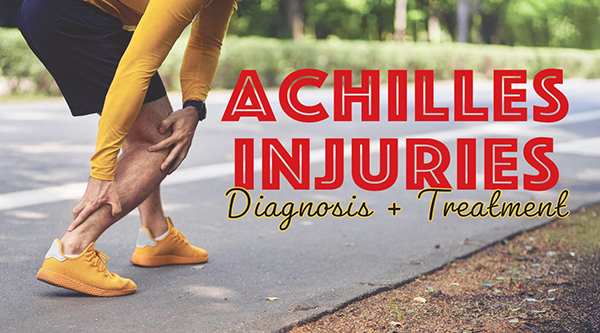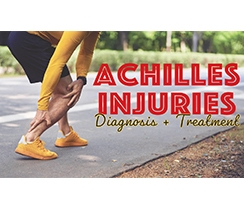
That last-minute pick-up game of basketball sounded like a great idea, and it was—until you made a sudden stop and felt a shot of searing pain rush through the back of your ankle. Or perhaps the warmer spring weather made you decide to start training for that marathon, and now the back of your ankle above your heel feels like it’s on fire. Both of these activities are common causes of injuries to the Achilles tendon. But other, less obvious reasons can be the root cause of Achilles injuries, too, such as wearing the wrong types of shoes when exercising.
Where is the Achilles tendon located?
The Achilles tendon is a stretch of fibrous connective tissue that runs vertically between the heel bone and the calf muscles. It’s the largest tendon in the human body. The blood supply to the Achilles tendon decreases substantially after age 30. This reduced blood supply makes the tendon easier to injure, because it causes the tendon to lose some of its elasticity.
Achilles Tendonitis, Tendinosis, and Rupture – What’s the difference?
The most common reasons behind Achilles tendon pain are tendonitis, tendinosis, and ruptures (tears). Ruptures can be full or partial. Although the term “Achilles heel” is well known, pain in the back of the heel may actually be the result of an injury to the Achilles tendon, among other causes.
Achilles tendonitis occurs when the tendon becomes swollen or painful, and those conditions worsen during activity. Not warming up properly before exercise, running on hard surfaces, and trying to do “too much, too fast” are common causes. Symptoms of Achilles tendonitis include:
- Heel and tendon pain when walking or running
- Painful tendon stiffness in the morning
- Nagging pain in the back of the heel that makes wearing shoes uncomfortable
- Difficulty standing on your toes
Achilles tendinosis occurs when the fibers in the tendon start to break down. It’s a degenerative condition and as such isn’t accompanied by inflammation or swelling like Achilles tendonitis is. There may also be a burning sensation in the area of the tendon.
Achilles ruptures are caused by quick movements, such as pivoting during sports or stepping off a curb. A rupture can cause sudden, sharp pain and a “popping” sound. It might also feel like a hard object struck the tendon from behind. Treatment for ruptures depends on the rupture severity.
Getting the Correct Diagnosis and Treatment
The correct treatment for Achilles tendon pain is dependent on an accurate diagnosis. There are other causes for Achilles tendon pain in addition to those noted above and those conditions need to be diagnosed correctly or ruled out before the proper treatment for Achilles tendon pain and injury can begin. Seeing a healthcare provider who specializes in foot and ankle injuries shortly after the onset of Achilles tendon pain is recommended to prevent the injury from becoming worse. For the best possible care for your foot and ankle health, choose a specialty-trained Orthopedic Specialist. Let the “O” at Orthopedic + Fracture Specialists help Put Your Life in Motion.

